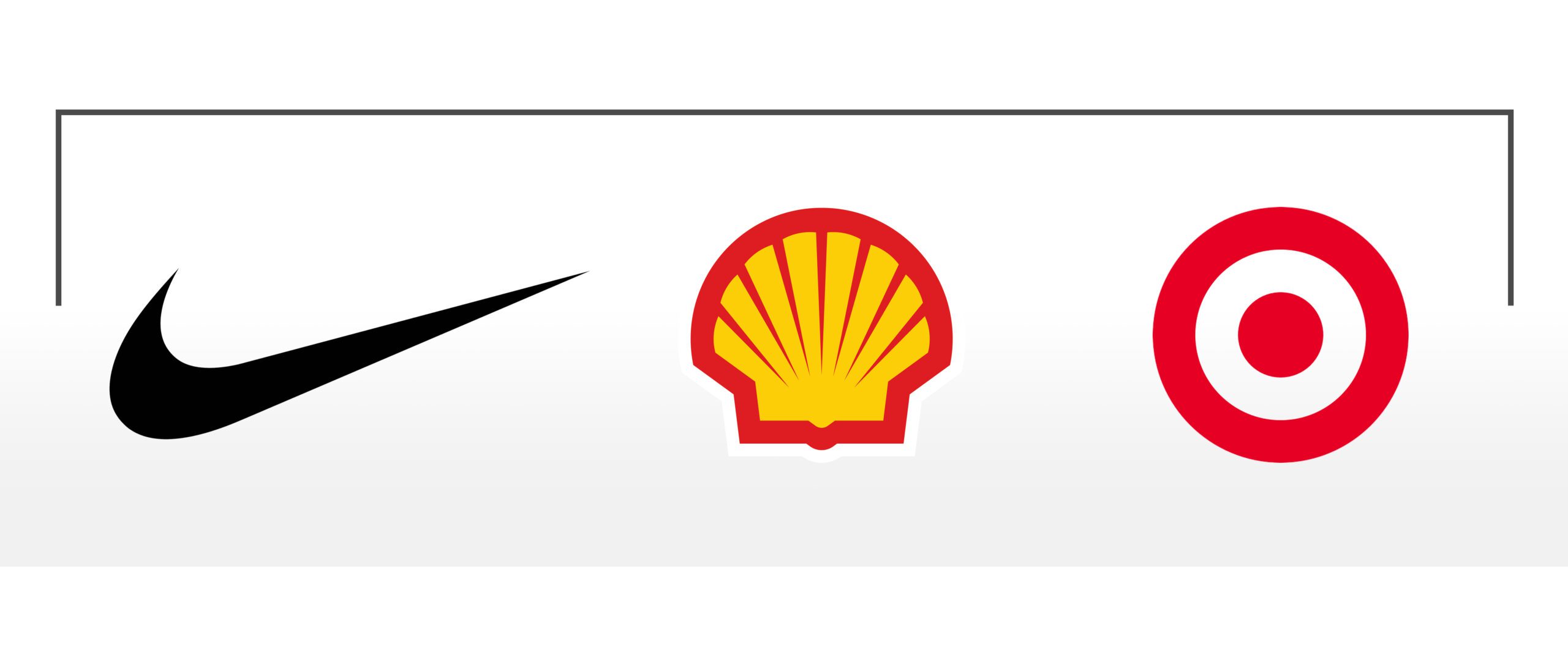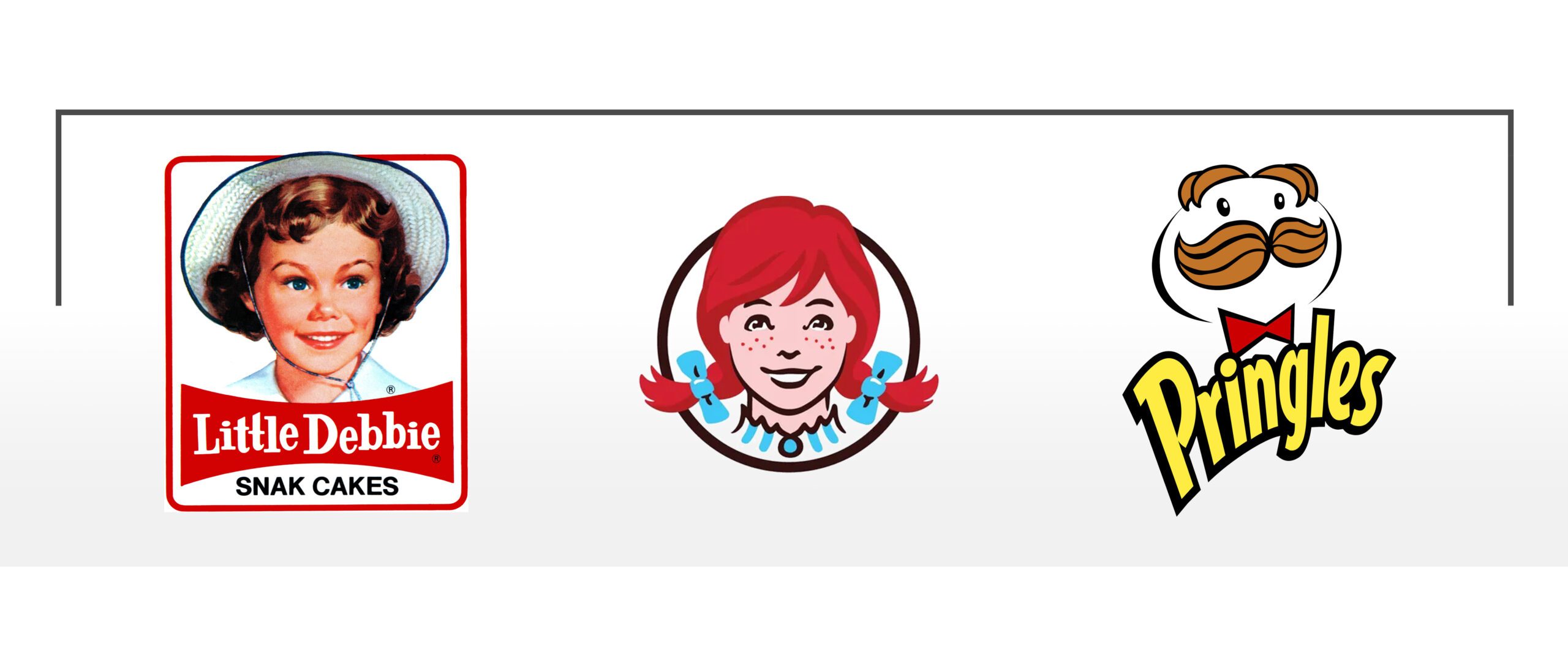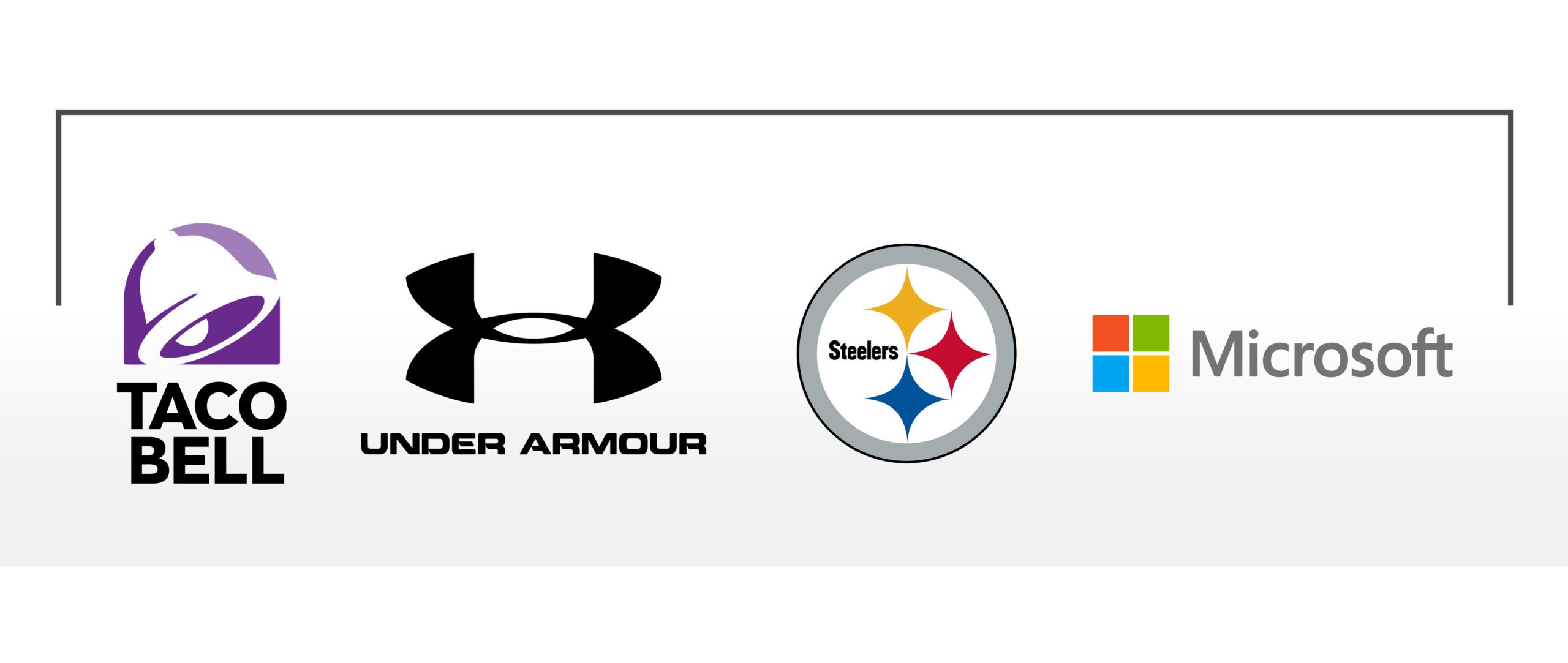Choosing the Right Type of Logo Design is a Key to Branding Success
When you think of a specific brand, the first picture that pops into your head is likely its logo, or at least a specific product or advertising with its logo emblazoned on it. Featuring one or more of a brand’s established graphic elements, such as colors, fonts, and tagline, a logo is an easily recognizable symbol a company or organization uses to represent it and build customer familiarity with its brand and their offerings.
Logo designs come in a wide variety of styles and meanings. Some are no brainers, such as Target’s red-and-white bullseye, while others are artsy and abstract, like Pepsi’s red-white-and-blue wavy circle, or nods to the company’s background, like BMW’s blue-and-white four-quadrant circle, an inversion of the flag of Bavaria where the company was founded and is still headquartered.
The Face of Your Brand
Think of your logo as the dating site profile pic for your brand identity, the face of your brand. It’s typically a potential customer’s first impression and introduction to your brand. So it better be sharp, memorable, and capture the essence of your brand — personality, values, and all — if you’re going to get the results you desire. It also must be unique, not easily confused with other logos, especially those in your industry.
Arguably your brand’s greatest visual asset and one of the key ways to distinguish it from those of competitors, your logo is the main identifying characteristic on practically everything associated with it, including product packaging, signage, website pages, social media, press releases, digital and traditional advertising pieces, and more. This is why designing your logo right is so critical to your company’s success.
What makes the difference between a ho-hum, run-of-the-mill logo and a powerful, unforgettable logo that a company can use for years, even decades, before updating or changing? The perfect balance of color, images, and copy, of course, but the type of logo you choose is also a big factor.
Which Type of Logo is Right for Your Brand?
When deciding on a logo, you have to consider everywhere you’ll want your logo to appear, from digital to traditional channels. You’ll want to make your logo design scalable so you can use it across your external and internal communications. Today, many brands use their main logos as their app icons on phones, PCs, TVs, and other devices that feature apps. In fact, most newer brands likely designed their logos keeping in mind how they would translate to app icons (and it could be something you consider).
Logos can be broken down into three main categories — logotypes (text-centric logos of which there are two main types), logomarks (image-centric logos of which there are four main types), and logotype/logomark combinations. Within those categories are seven main types, which you should explore as you start on your logo designing journey:
1. Lettermark Logos

A lettermark, or monogram, logo is a typography-based logo featuring a company’s initials. Typically ranging between two and four letters, lettermark logos are highly effective at streamlining brand names, especially those with many letters or words such as the National Aeronautics and Space Administration (NASA). White letters with a boldly colored background or black letters over white are popular styles of lettermark logos.
If you have a long brand name and are looking for a simple, clean look, a lettermark may be your best bet. However, it may not be a wise choice if you have a new and unknown brand, as people may have trouble understanding just what it means. This is why companies sometimes pair their full name with the monogram until getting better established.
Choosing the font for your logo — and other branding elements for that matter — is critical with topography-centric logos. Another opportunity for your brand to stand out from the crowd, the font you use must be unique, legible, scalable, and capture the essence and voice of your brand. Whether you want to give off a serious, playful, elegant, friendly, or inspirational vibe, the look and feel of your lettering must reflect this.
2. Wordmark Logos

The other topography-centric logo type is the wordmark which spells out a brand’s full name instead of just its initials. Like the lettermark logo, a wordmark incorporates a brand’s colors and fonts, and, by continually exposing consumers to its brand name, it’s a great way to build name recognition. Wordmark logos lend themselves to a larger palette, when compared to lettermark logos, as they have more letters to work with. For example, Google and FedEx utilize more than one color in their letters for a bolder and distinct look.
A wordmark logo may be right for the brand you’re working with if it’s a short and simple name, such as Coca-Cola or Visa. Longer names may appear too bunched together when spelled out. You may want to choose wordmark over lettermark if you want to expand your design options and use of color.
3. Icon Logos

An icon logo, also called a pictorial logo, is a graphic-centric logo that acts as an overarching symbol of a brand. It may be used alone or be combined with a company’s logotype or tagline. Once established in the mind’s of consumers, an icon logo is instantly recognizable, and the most effective ones eventually don’t need any words to qualify them. Perhaps the most famous logo of all time, the Nike swoosh “checkmark” is the perfect example of an icon logo (though it can also be considered abstract). Rarely needing the word Nike with it, the swoosh alone is used on all types of products and advertising.
Because it’s not as simple and obvious as letters, the design of an icon logo is even harder to nail down. It needs to create meaning, stay on-brand, and evoke the desired emotion without saying it outright. For instance, the Nike swoosh conveys movement while the Target bullseye implies prices that are on the mark. The beauty of simple icon logos is that they can also be presented in different colors to coordinate with the apparel that they’re on or even celebrate a holiday on social media.
Icon logos make a better match for your brand if it is more established and you’ve already created an association between the image and the brand. If you anticipate changes to your business in the near future, then an icon logo may not be right for you. Remember, this is an image that you expect your audience to associate with your brand for years to come, so not only do you have to make sure it’s a good one but also that it will align with your brand identity and goals well into the future.
4. Abstract Logos

While icons incorporate more obvious and easily recognizable images, such as an apple or shell, abstract logos are more unique and stylish, utilizing geometric shapes and unconventional lines. Like icon logos, abstract logos don’t normally contain text but use color and form to convey meaning. Pepsi, BP, Spotify, and adidas are well known for their abstract logos. However some, like Playstation, sneak in their lettermarks in an abstract way.
For something truly one-of-a-kind and artistic that stands out from the crowd, an abstract logo may be right for you. However, because it takes a greater understanding of how to use color, shape, and structure to design it, probably best to consult a professional designer with your abstract logo vision.
Pictorial and abstract marks are especially useful if your business operates on a wider, more global scale, as lettermark and wordmark logos may not translate well in other places.
5. Emblem Logos

Encasing several branding elements in a shapely receptacle, such as a circle, badge, or crest, emblem logos contain both text and images/icons. Emblems may offer a more traditional look and feel, but their striking style can be just as effective in the modern age. The auto industry is famous for them, as are schools, organizations, and government agencies.
Arguably less versatile than other types of logos, intricate emblem designs aren’t easily replicated across all channels, and busy ones aren’t easily scaled as the letters may become illegible when shrunken. However, emblems are notable for adding a polished touch to products such as appliances and vehicles. An emblem logo can work well for you if you’re looking for a more dignified, classic appearance and not working with a whole lot of letters.
6. Mascot Logos

Huge in the sports world, mascots are characters, be it human or an anthropomorphized animal or object that act as colorful, often lighthearted, and cartoonish representatives of a brand and are typically aimed at appealing to children or families. From the Kool-Aid Man and Ronald McDonald to the Pillsbury Doughboy and Pirate Parrot, some are real-world costumed mascots while others are depicted in advertising and on packaging. A mascot logo is one that features an illustration of a brand’s mascot.
You may want a mascot logo if you have a more playful brand identity and you want to reach younger audiences or to create a nostalgic vibe. While you may not want to use it across all your marketing channels, mascot logos are great for social media, packaging, and other key marketing channels.
7. Combination Logos

A combination logo is a hybrid that combines any of the six earlier types of logos (e.g. a wordmark logo with an icon logo). Whether positioned side-by-side, one over the other, or intertwined, a great combination logo features a great balance between words, color, and images. Combination logos are a versatile and popular choice because they allow you to make that connection between your name and an icon or other branding elements. In time, you can separate the different elements and use them on their own effectively. Furthermore, because they tend to produce a distinct image altogether, combination logos are often easier to trademark than icon or lettermark logos.

Some combination logos pair a brand’s main icon logo with its tagline or slogan.

Other combination logos, such as the lettermark/icon Milwaukee Brewers logo, are great at subtle meaning and cleverly incorporating meaningful elements, e.g. the M (for Milwaukee) and b (for Brewers). The fact that it can stand on its own as a ball-and-glove helped make it arguably one the best logos in MLB history. To think that it came from a contest and the mind of a 17-year-old art school student (later refined by a professional graphic designer) only adds to its lure.

Bigger brands often have more than one type of logo which they use in different situations. The University of Notre Dame, for instance, has several different well-known logos including a lettermark logo, a combination logo for academics, and a mascot logo more suited to their athletics.
Choosing the right type of logo is a pivotal point in the branding process. To make this difficult decision easier, it’s wise to get the opinions of other decision-makers, coworkers, friends, and experts, like M:7 Agency.
At M:7, our graphic designers have an eye for attention-grabbing icons, fonts, and composition as well as the skills to craft the ideal logo to capture the essence of your brand. Whether you’re looking for a logo that incorporates your established branding elements or you’re starting your branding from scratch, reach out to us today and we’ll help you achieve your logo vision.
